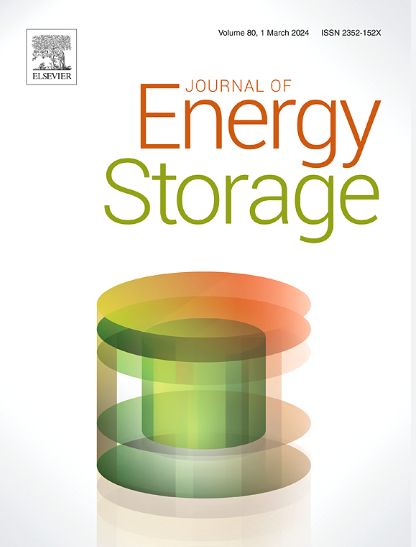Thermal performance of latent heat thermal energy storage units with fin optimization structure constructed based on the solid-liquid interface movement velocity
IF 8.9
2区 工程技术
Q1 ENERGY & FUELS
引用次数: 0
Abstract
A novel method is proposed to optimize the fin structure to improve the horizontally positioned shell-and-tube latent heat thermal energy storage systems' thermal performance. This approach is according to the variation law of movement velocity of the solid-liquid interface in melting for a horizontal bare tube latent heat thermal energy storage unit. By optimizing the internal fin structure, the method balances the heat transfer rates in all regions, resulting in shorter melting times and improved thermal performance. The enthalpy-porosity method is used to simulate the transient phase change process of the PCM. Compared to conventional uniform fin structures, the fin height optimization and fin angle optimization configuration of the number of basic fins constructed by this method can increase the average heat transfer rate by 87.2 % and 20.8 %, respectively. Furthermore, the fin comprehensive optimization structure established by the further developed coupling fin angle optimization method and fin height optimization method can increase the average heat transfer rate by more than 106 %. These results show that the proposed approach can remarkably enhance the thermal performance of latent heat energy storage units and provide new inspirations for the optimization of the fin structure of future phase change thermal energy storage units.
基于固液界面运动速度的翅片优化结构潜热蓄热装置热性能研究
提出了一种优化肋片结构的新方法,以提高水平置壳管式潜热储能系统的热性能。该方法是根据水平裸管潜热蓄热装置熔炼时固液界面运动速度的变化规律提出的。通过优化内部翅片结构,该方法平衡了所有区域的传热率,从而缩短了熔化时间并改善了热性能。采用焓孔法模拟了相变材料的瞬态相变过程。与传统的均匀翅片结构相比,基于该方法构建的翅片高度优化和翅片角度优化配置可使平均换热率分别提高87.2%和20.8%。进一步发展的翅片角度优化法和翅片高度优化法建立的翅片综合优化结构可使平均换热率提高106%以上。结果表明,该方法能显著提高潜热储能装置的热性能,为未来相变储能装置翅片结构的优化提供新的启示。
本文章由计算机程序翻译,如有差异,请以英文原文为准。
求助全文
约1分钟内获得全文
求助全文
来源期刊

Journal of energy storage
Energy-Renewable Energy, Sustainability and the Environment
CiteScore
11.80
自引率
24.50%
发文量
2262
审稿时长
69 days
期刊介绍:
Journal of energy storage focusses on all aspects of energy storage, in particular systems integration, electric grid integration, modelling and analysis, novel energy storage technologies, sizing and management strategies, business models for operation of storage systems and energy storage developments worldwide.
 求助内容:
求助内容: 应助结果提醒方式:
应助结果提醒方式:


